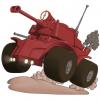Level Design Requirements?
1) Does anyone know what my portfolio needs/should be included?
2) Is there a list of things that I must show?
3) How far into the level design process do I need to showcase?
4a) Do I need to create and show a level/game design document?
4b) Do I need to show blockouts?
4c) Do I need to show the post-blockout phase (actual art assets in the scene)
4d) Do I need to show a playable level?
4e) Do I need to show post-playtest changes?
5a) For scripting AI or events: Should I just show screenshots of the code itself/ blueprints?
5b) Is there a better way to show technical knowledge for level design?
6a) Do I need to show that I know how to work with different engines? (Unity, Unreal Engine 4, Skyrim Creation Kit?)
6b) How do I showcase this?
6c) Do I need more than these 3? (Are there better options to showcase?)
7) Does anyone know of any good examples of level design portfiolios that I should strive for? The only ones that I have seen are ones that have industry experience showcasing fully released games, so I don’t know what I can show without showcasing fully complete levels.
Thank you. I really appreciate the help.
Well, I am no professional level designer myself, so take my words with more than a grain of salt...
If you need to ask "do I need this in my portfolio?", you are probably a) doing it wrong, b) level design might not be for you, c) you should work harder on your portfolio. This is a gross oversimplification and might sound a bit unfair, but lets leave it there as an opening statement.
Best thing to have in your portfolio is a finished level (or multiples, the more the better, showing different styles of levels for different styles of games), made in a wellknown game engine, where you can hit play and at least do a flythrough through the level, better interactively walk around in the level, better yet show simple gameplay taking place inside the level.
You will need to have knowledge of the editor of a game engine to achieve that... which of course will not hurt at all, seeing how a lot of a level designers work takes place inside the engine editor. If you apply for a job at a studio working in Unity and Unreal, and you have zero knowledge of either engine, while another applicant at least brings indepth Unity knowledge to the table, you can guess who they are gonna pick.
You will need some basic art and scripting skills. They are not the main level design skills, but without that, you will struggle building portfolio pieces. And again, it will not hurt your chances with future employers to show that you are very well capable of releasing the programmers and artists from some of the smaller fixes that are needed to make art assets work in your level, or script the interactivity needed.
Important: Never, ever forget that you are trying to show your level design skills first and foremost. There is no shame in using free or stock art, or copy/pasting or using open source / bought code (beware of licensing issues though).
Just be honest what you modelled/coded yourself, and what you didn't... and beware of using someone elses IP. Creating a Megaman clone with original art and name is fine... using the art from Megaman games, and calling it "MyMegamanGame" most probably will make you look bad in front of future employers.
You are expected to be able to design and block out levels. Personally I would show some work at this stage too. Just so your future employer does not get the impression you were just throwing your levels together and tweaked them endlessly until they became good enough, instead he should get the impression that you have a process, and that your levels are actually well though out thanks to that process.
When it comes to showing of code, I would personally do it as with anything else: have both the final, runnable version in your portfolio, as well as the "source".
For level design, that means not only the playable level, but also stats about the level (poly count, technical details, whatever), some wireframe screenshots, maybe the project itself if its not to big (so it could be opened in an engine editor)?
For code, I would include the source. Seeing that code runs is only half of the story... seeing how it works internally is more interesting.
This is most probably not the most important part of your portfolio though, seeing that you are not applying for a job as game programmer... keep that in mind.
For showcasing, playable levels are easy. You could also do flythoughs through levels lacking interactivity and make a video of it. Screenshots should also be fine.
Some people like to be able to look at sources (in case of level design, that would be the project, design documents, blockouts)...
Maybe have all of that on a memory stick, better yet have a laptop with you that is powerful enough to run all this, so you are not depending on their hardware being ready to show your stuff.
Generally, never ask "how much is enough"... if you got to ask, you most probably could do more. The question is rather "How much do I want to invest?"... this question only you can answer.
If you really want a job, and there is a ton of other good applicants, there most probably never is enough... you might get lucky and get through the process and come out as the most suiting candidate thanks to sheer luck even if you do less.... but do you really want to leave getting that job to luck?






